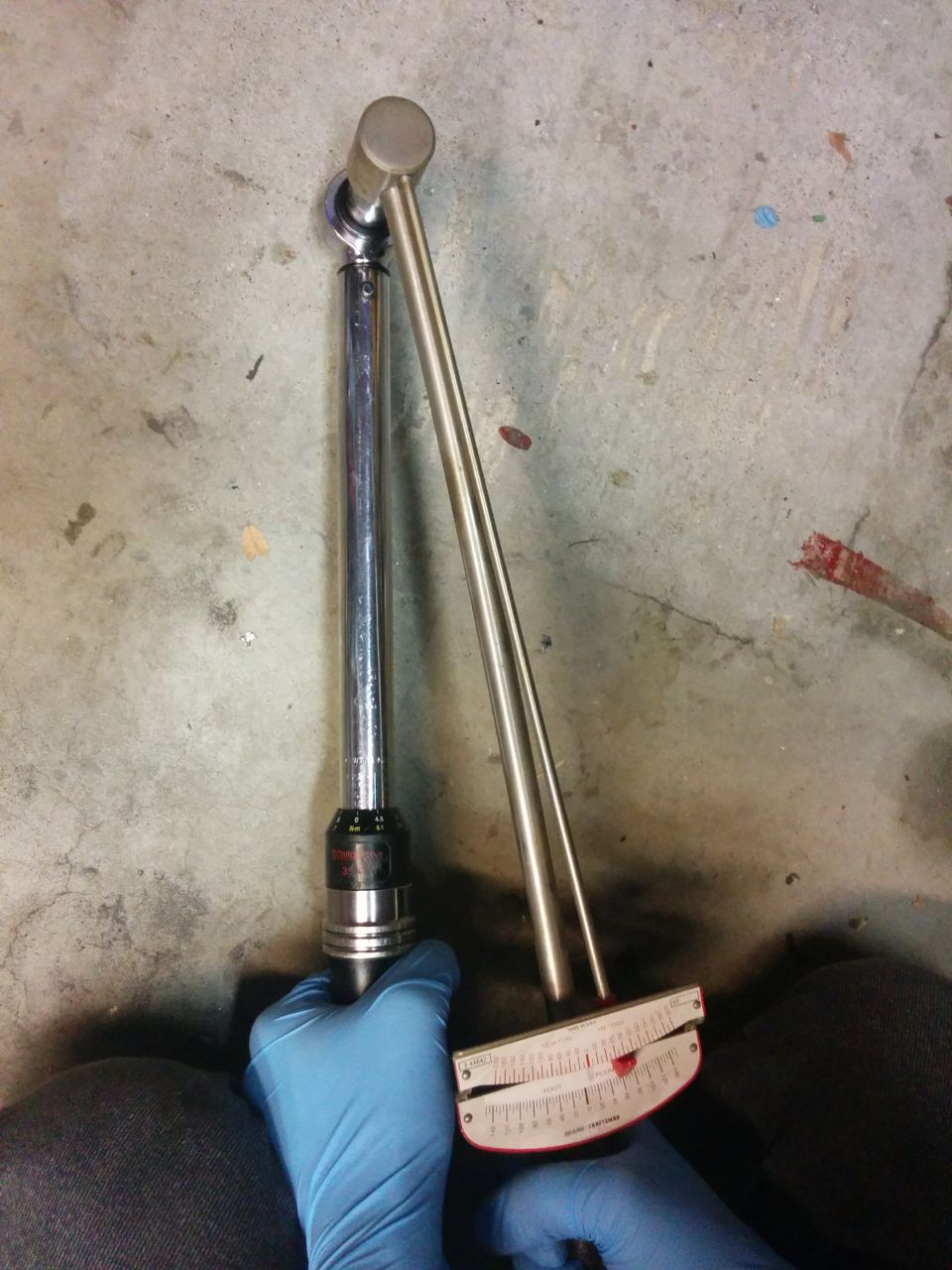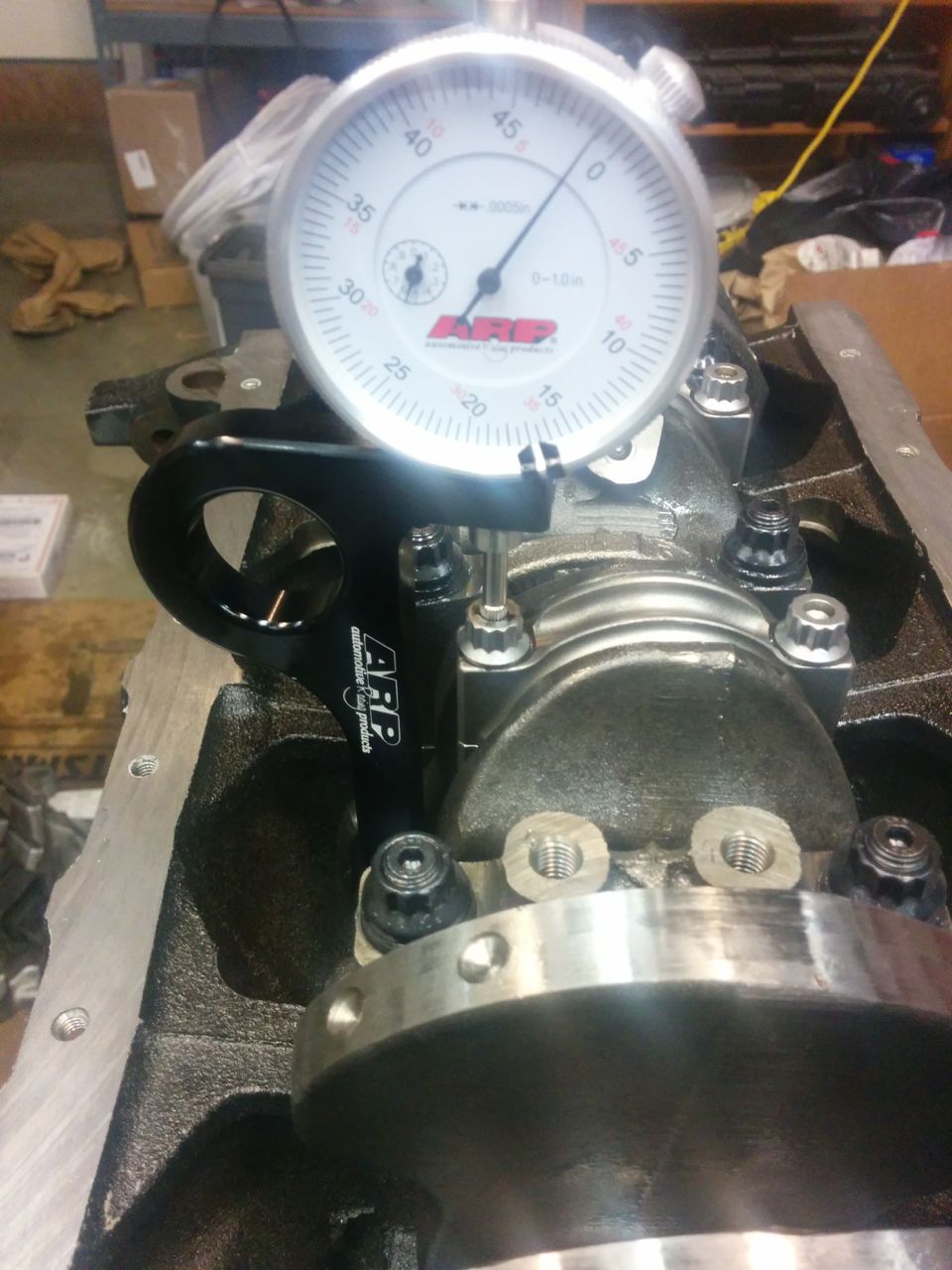torque wrench calibration, torquing technique general
#1
In the past, I've just trusted the click wrench, but after reading tons of articles about bolt stretch and preload and alloys and ****, I'm scared of not doing a near-perfect job and my precious motor spins a bearing or something.
I talked to my dear comrades at the machine shop and they said they used a click wrench for most tasks but they would periodically double check it against a beam wrench. This seemed like really solid advice, but I've seen some really cool digital things that look like they have potential ( ). I'm basically sold on the beam type but I'm leery of trying to accurately read a dial while pulling on something with 60 lbs of force.
I'm open to suggestions, especially from people that have assembled multiple engines without them falling apart later on.
I talked to my dear comrades at the machine shop and they said they used a click wrench for most tasks but they would periodically double check it against a beam wrench. This seemed like really solid advice, but I've seen some really cool digital things that look like they have potential ( ). I'm basically sold on the beam type but I'm leery of trying to accurately read a dial while pulling on something with 60 lbs of force.
I'm open to suggestions, especially from people that have assembled multiple engines without them falling apart later on.
#2
Senior Member
iTrader: (10)
Join Date: Aug 2007
Location: Fredericton, NB
Posts: 1,186
Total Cats: 4
I use a JET click wrench for just about anything...I keep it in it's case and at zero when not in use. I've checked against others and it's usually within a few ft/lbs which is great for any engine I've assembled.
Any engine that has come apart on me has had nothing to do with improper torque specs. You should be fine IMO
Any engine that has come apart on me has had nothing to do with improper torque specs. You should be fine IMO
#3
In the past, I've just trusted the click wrench, but after reading tons of articles about bolt stretch and preload and alloys and ****, I'm scared of not doing a near-perfect job and my precious motor spins a bearing or something.
I talked to my dear comrades at the machine shop and they said they used a click wrench for most tasks but they would periodically double check it against a beam wrench. This seemed like really solid advice, but I've seen some really cool digital things that look like they have potential (amazon link). I'm basically sold on the beam type but I'm leery of trying to accurately read a dial while pulling on something with 60 lbs of force.
I'm open to suggestions, especially from people that have assembled multiple engines without them falling apart later on.
I talked to my dear comrades at the machine shop and they said they used a click wrench for most tasks but they would periodically double check it against a beam wrench. This seemed like really solid advice, but I've seen some really cool digital things that look like they have potential (amazon link). I'm basically sold on the beam type but I'm leery of trying to accurately read a dial while pulling on something with 60 lbs of force.
I'm open to suggestions, especially from people that have assembled multiple engines without them falling apart later on.
I had no problem at all using it to do head studs. Yeah a click type is faster, but it's no problem to use a beam type. If you were local I'd let you use mine to see, but they're only 25 bucks at Sears for the one I bought.
EDIT: And my engine hasn't fallen apart, running 30 PSI boost.
#5
You don't even need and nuts and bolts -- there's a size of 12 point socket that will fit over 1/2" square drive (I forget which one it is) and that lets you hook the two wrenches directly to each other.

Set the click-type to the torque spec you want, use the beam type to measure the point at which it actually breaks. Adjust until you get what you want, do it a few more times to check that it's repeatable, and then use that settings on the click-type. Trying to actually use a beam-type while tightening is a PITA.
For rods you should be using a bolt stretch gauge, not a torque wrench.

--Ian

Set the click-type to the torque spec you want, use the beam type to measure the point at which it actually breaks. Adjust until you get what you want, do it a few more times to check that it's repeatable, and then use that settings on the click-type. Trying to actually use a beam-type while tightening is a PITA.
For rods you should be using a bolt stretch gauge, not a torque wrench.

--Ian
#8
With a bolt stretch gauge the friction isn't relevant any more, thus you can get a repeatable result with a lot less worry about the exact procedure. They're $50 at Summit -- cheap insurance in my book.
--Ian
#13
1.) Torque is just a force times a length (lbs times ft = lbft). I used to work in calibration (US Army Primary Standards Lab calibration technician my last couple years of collage), and the easiest way to get a traceable torque to perform a calibration with is to clamp the torque wrench to a workbench, and apply a calibrated mass at a calibrated length using a precisely measured jig. If it clicked at the indicated wrench setting corresponding to the torque you just applied, and didn't click at the setting one lbft above it, you were calibrated.
2.) Having said that, I calibrated my personal Husky torque wrench by clamping the square drive in a vice, and applying 25 lb weights to a piece of chain hung a foot from the center of the drive square, as measured with a ruler. This was a shitty calibration, but it measured out plus or minus a single ftlb repeatably, and I'm cool with that.
3.) We calibrated ~50-100 torque wrenches a year (this is usually a secondary or transfer lab task; it shouldn't have been our responsibility). We found that torque wrenches tended to remain within a tiny percentage of the calibration numbers from year to year unless they were obviously abused. I don't believe that it really matters in real use if you store your torque wrench at zero or not.
4.) A bolt stretch gauge is the correct tool for measuring rod bolts. At $50, it seems ludicrous not to buy the correct tool for a job like this.
2.) Having said that, I calibrated my personal Husky torque wrench by clamping the square drive in a vice, and applying 25 lb weights to a piece of chain hung a foot from the center of the drive square, as measured with a ruler. This was a shitty calibration, but it measured out plus or minus a single ftlb repeatably, and I'm cool with that.
3.) We calibrated ~50-100 torque wrenches a year (this is usually a secondary or transfer lab task; it shouldn't have been our responsibility). We found that torque wrenches tended to remain within a tiny percentage of the calibration numbers from year to year unless they were obviously abused. I don't believe that it really matters in real use if you store your torque wrench at zero or not.
4.) A bolt stretch gauge is the correct tool for measuring rod bolts. At $50, it seems ludicrous not to buy the correct tool for a job like this.
#14
Elite Member

iTrader: (3)
Join Date: Apr 2014
Location: Huntington, Indiana
Posts: 2,885
Total Cats: 616
Nothing will make a torque wrench lose calibration faster than loosening bolts with it.
It's amazing how many PhD's I work with that don't know the difference between a torque wrench and a regular ratchet.
It's amazing how many PhD's I work with that don't know the difference between a torque wrench and a regular ratchet.
#15
http://www.amazon.com/s/ref=nb_sb_no...+torque+wrench
Buy any torque wrench from this brand, you'll be fine. Store at zero, even though split beam wrenches don't require it.
Personally, I prefer click-type or spit beams. Dial type, in my opinion, are much harder to use at high torque levels or limited access situations.
It's all about technique, and sequence. You need to make a smooth gradual pull until the required torque is met.
Buy any torque wrench from this brand, you'll be fine. Store at zero, even though split beam wrenches don't require it.
Personally, I prefer click-type or spit beams. Dial type, in my opinion, are much harder to use at high torque levels or limited access situations.
It's all about technique, and sequence. You need to make a smooth gradual pull until the required torque is met.
Thread
Thread Starter
Forum
Replies
Last Post
Shibby
Miata parts for sale/trade
16
01-29-2016 11:01 PM
Quinny
Prefabbed Turbo Kits
6
01-25-2016 06:11 PM










